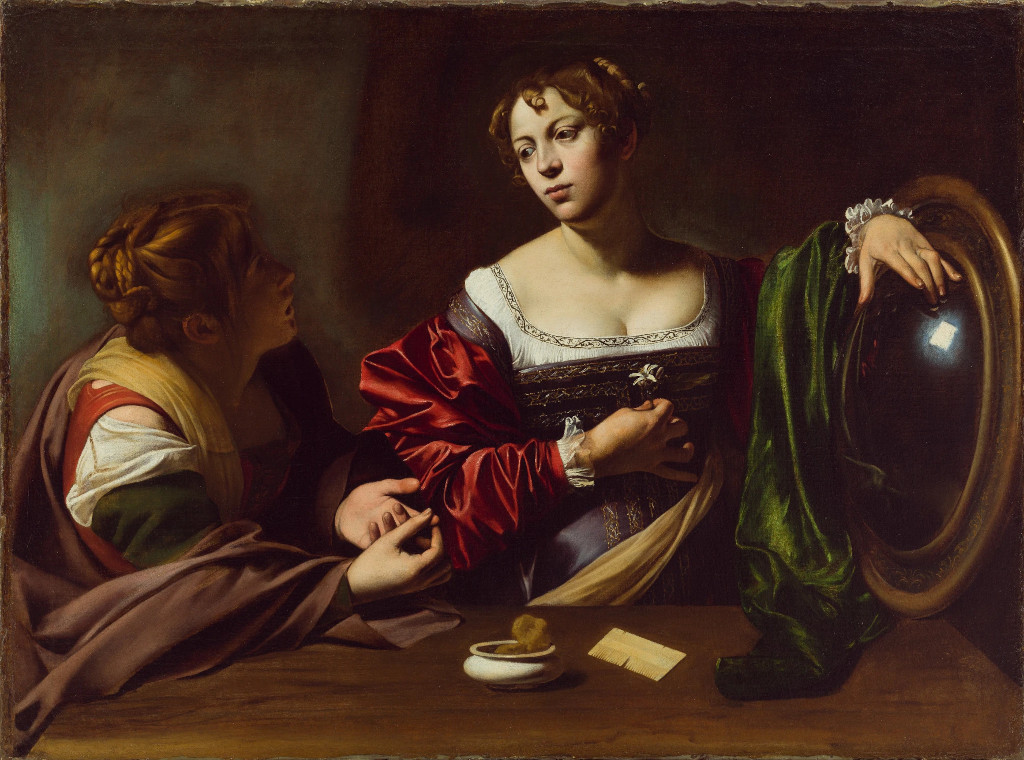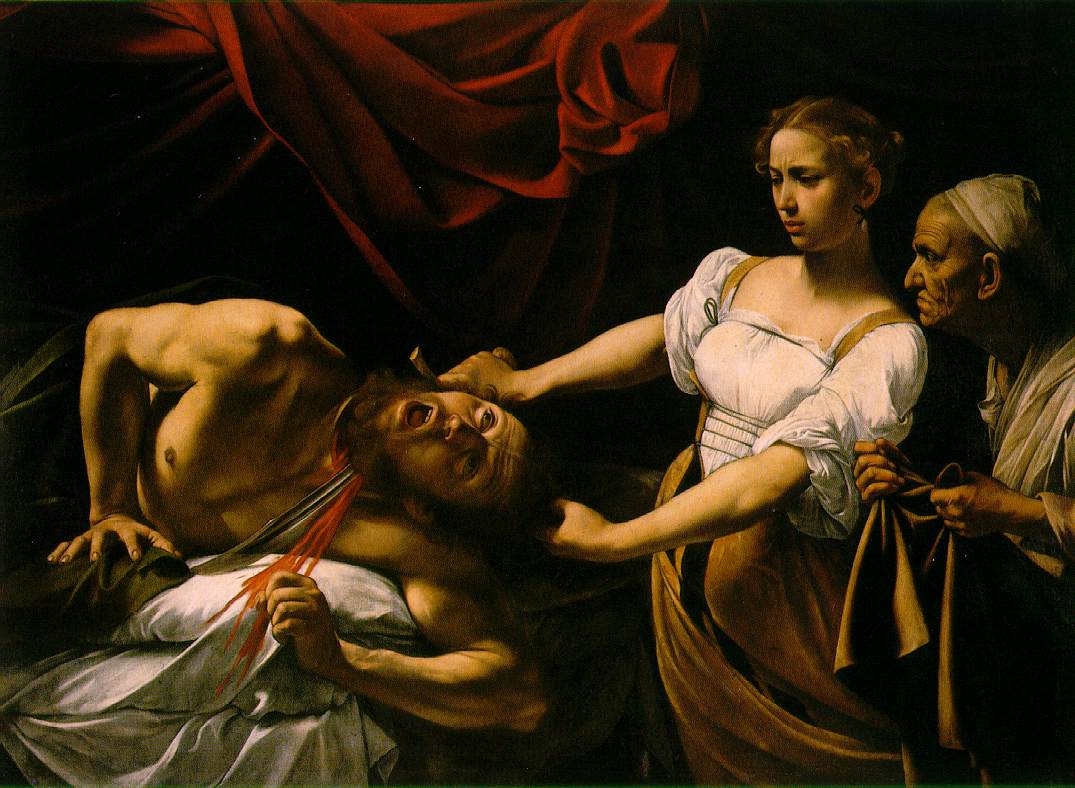Caravaggio's Death of the Virgin, 1605-1606, Santa Maria della Scala, Rome
Prostitution in the Christianity has never been an accepted practice despite the sins of the flesh committed by their prominent religious figures. The extremely critical stance that the Catholic church had on carnal sins showed how, at the time, it did not readily accept all peoples despite their Christ's teachings. Ironically, Mary Magdalena, a Christian saint and often misidentified prostitute turned believer, was regarded as second to Mary, mother of Jesus: "She created the symbolic duality of a sinful life in the physical sense, and on the other hand, a pure soul in the spiritual sense." During this time, the Church was regarded as corrupt and would give out indulgences promising salvation for payment to lay people. They spent the acquired money on lavish structures and personal wants.
This would change during the Protestant Reformation when Martin Luther starts to criticize the church for taking indulgences and states that everyone is able to reach God. Prostitution, despite the changes after the Council of Trent, would still be regarded as a negative influence in society: "the harlot's image became a symbol of modern society's illness".
Caravaggio's Saint Catherine of Alexandria, c. 1598, Thyssen-Bornemisza Collection, Madrid, Spain
Caravaggio confronted these negative stigmas by using prostitutes as models throughout his works depicting them as religious figures in history. Because they were well known, it is easy to imagine why such a portrayal would spark an outrage among the community. Consequently, some of Caravaggio's works with prostitutes as models were destroyed.
One of his most famous works Death of the Virgin shows Mary, mother of Jesus, dead and bloated. The painting was rejected by the patrons who commissioned it because it showed the Virgin subject to degrading earthly forces and she was modeled by a prostitute. This well-known prostitute's name was Fillide and she has been prominently featured in many of Caravaggio's works, many of which were destroyed.
Caravaggio's Portrait of a Courtesan (aka Portrait of Fillide), c. 1597, destroyed
One of his reasons for using lay people as models in prominent religious works is to show the human connection with the divine. His constant portrayal of Fillide in his works as the main figure is either to show his affections or to evoke a response from the public or both. It would not be surprising if Caravaggio was one of Fillide's patrons since she was always sought out by Rome's elite. Outside of using her as a model for his paintings, Caravaggio also killed Fillide's pimp, Ranuccio Tomassoni, in a attempt to castrate him.
Caravaggio's Martha and Mary Magdalene, c. 1598, Detroit Institute of Art
Caravaggio's muse is depicted as Mary in Death of the Virgin, Flora in Portrait of a Courtesan, Mary in Martha and Mary Magdalene, Judith in Judith beheading Holofernes, and perhaps many more that may have been destroyed. After 1599, Fillide does not appear in any more of Caravaggio's works. No one knows why and Caravaggio never addressed it.
Caravaggio's Judith beheading Holofernes, 1598-1599, Galleria Nazionale d'Arte Antica, Palazzo Barberini, Rome
Sources:
















